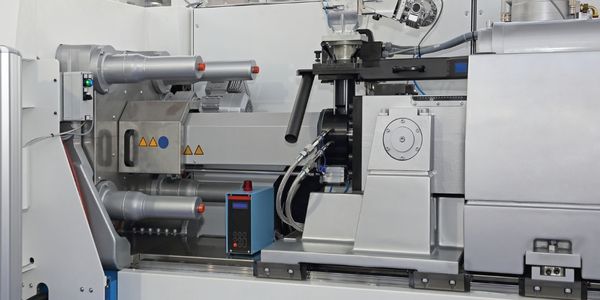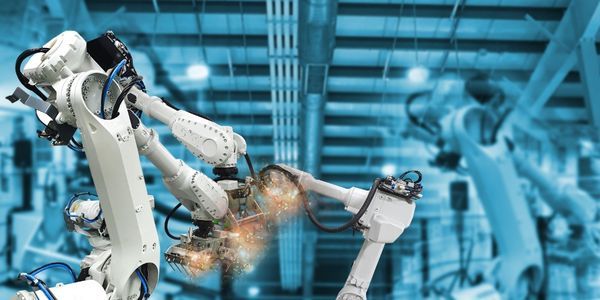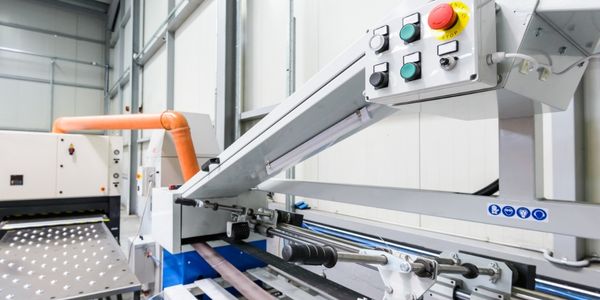Customer Company Size
Large Corporate
Region
- Europe
Country
- Germany
Product
- SAP Business One
- DocuWare
Tech Stack
- ERP System
- DMS System
Implementation Scale
- Enterprise-wide Deployment
Impact Metrics
- Productivity Improvements
- Digital Expertise
Technology Category
- Functional Applications - Enterprise Resource Planning Systems (ERP)
Applicable Functions
- Discrete Manufacturing
- Quality Assurance
Use Cases
- Manufacturing System Automation
Services
- System Integration
About The Customer
Alfred Rexroth is a company with a long tradition in the metal industry. Based in Berlin, the company produces intricate parts for customers from a wide range of industries, but predominantly the medical and manufacturing plant engineering sectors. The documentation requirements are particularly high in this field. The company needs to archive several hundred thousand documents every year. The company operates in various departments including accounting, purchasing, sales, production planning, work preparation, logistics, quality assurance, documentation, manufacturing, and human resources.
The Challenge
Alfred Rexroth, a Berlin-based company in the metal industry, had to archive several hundred thousand documents every year. The company faced challenges in retrieving these documents due to the time-consuming search process. They decided to switch their ERP system to SAP Business One and find a new DMS system as updating their previous system would have been too expensive and required costly consultants. The company also faced issues with tracking invoices as they were sent around the company in circular files. The company also had to compile extensive documentation for each product manufactured, which had to be provided to the customer.
The Solution
Alfred Rexroth partnered with their systems house to implement DocuWare in its accounting department and installed a workflow for authorizing incoming invoices. Invoices are either scanned or automatically retrieved from the email inbox, indexed, and archived in a central document pool. A built-in escalation process ensures that no invoice is left unattended. The workflow ends as soon as a document is finally checked back into the accounting department and (if approved) automatically posted and archived. Not only are accounting documents stored in the electronic document pool, but also all documents that are generated in the various departments of the company. Thanks to the interface to the ERP system, everything that needs to be filed is automatically indexed and stored in DocuWare. Paper documents are scanned and archived. Using the convenient full-text search, all authorized persons from across departments can access the documents.
Operational Impact
Quantitative Benefit

Case Study missing?
Start adding your own!
Register with your work email and create a new case study profile for your business.
Related Case Studies.

Case Study
Plastic Spoons Case study: Injection Moulding
In order to meet customer expectations by supplying a wide variety of packaging units, from 36 to 1000 spoons per package, a new production and packaging line needed to be built. DeSter wanted to achieve higher production capacity, lower cycle time and a high degree of operator friendliness with this new production line.

Case Study
Robot Saves Money and Time for US Custom Molding Company
Injection Technology (Itech) is a custom molder for a variety of clients that require precision plastic parts for such products as electric meter covers, dental appliance cases and spools. With 95 employees operating 23 molding machines in a 30,000 square foot plant, Itech wanted to reduce man hours and increase efficiency.

Case Study
Fully Automated Visual Inspection System
Tofflon has developed a fully automatic machine that uses light to inspect vials, medicine bottles, or infusion containers for glass fragments, aluminum particles, rubber grains, hairs, fibers, or other contaminants. It also detects damaged containers with cracks or inclusions (microscopic imperfections), automatically removing faulty or contaminated products. In order to cover all production processes for freeze-dried pharmaceuticals, Tofflon needed to create an open, consistent, and module-based automation concept.

Case Study
SAP Leonardo Enabling Rocket Science
At times, ULA has as many as 15 different operating systems dedicated to overlapping processes, such as rocket design, testing, and launch. Multiple systems created unnecessary costs and unwanted confusion among workers at offices, factories, and launch sites in different location. In order to improve collaboration and transparency during vital activities that directly influence mission success, ULA wanted to improve data sharing and streamline manufacturing processes.

Case Study
IIC Smart Manufacturing Connectivity for Brown-field Sensors
The discrete manufacturing domain is characterized by a strictly hierarchical structure of the automation systems, commonly referred to as the automation pyramid. Data acquired by a sensor typically flows through an IO-module into a Programmable Logic Controller (PLC) which manages the local real-time control system. As all process data are concentrated in the PLC, re-programming the PLC and thus, implementing interfaces to access these data appear to be the natural choice to transfer them to the IT system. However, for brownfield installations this choice has proven impracticable for the following two reasons:In brownfield facilities, PLC usually operate within a once-specified environment and are rarely re-programmed. That is why the active staff is often not familiar with the code and lacks of the competence to modify the existing implementation in a reasonable amount of time.Furthermore, for cost reasons, any PLC was selected to exactly match the requirements of the environment within which it was intended to operate. That is why it cannot be assumed that a PLC will be able to support additional tasks such as communicating data through additional interfaces.

Case Study
Smart Factory Solutions for Tobacco Industries: Bridging the Manufacturing Generation Gap and Improving Operational Efficiency
The tobacco industry, represented in this case by British American Tobacco (BAT), is facing a decline in cigarette volumes worldwide. This decline has led to an increased emphasis on efficient supply chains and optimized production processes. The industry is also grappling with the need for agile production facilities and the integration of Industry 4.0 to accommodate diverse production requirements. BAT, in particular, was seeking a factory solution to automate their product control processes, from the transportation of tobacco and cigarette paper to the placement on cigarette machines and the packing conveyor. The company also needed to support the continuous use of legacy equipment, such as relay-controlled cigarette machines dating back to the 90s and AMK servo drive systems, to sustain production levels at speeds of 8000 to 16000 pieces per minute. Furthermore, changing regulatory guidelines necessitated flexibility in labeling requirements.







